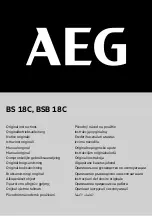
488
SELECTION
1) Formula for calculating the acceleration and
deceleration times (simple method)
where,
J
T :
All J = motorJ
M
+ loadJ
L
(converted to an equivalent JM at the motor
shaft) [kg m
2
]
N:Difference between motor speeds before and
after acceleration/deceleration N
1 -
N
2
[r/min]
T
M:
Rated motor torque
T
L
max:Maximum load torque (converted to an
equivalent JM at the motor shaft) [N m]
T
L
min: Minimum load torque (converted to an
equivalent JM at the motor shaft) [N m]
α
a: Acceleration torque coefficient
*
β:
Brake torque coefficient regenerative braking
torque
*
P: Rated motor torque [kW]
N: Motor synchronous speed at 60Hz [r/min]
2) Calculation and setting example of the
acceleration and deceleration times ([
Pr. 7, Pr. 8
])
Set the time to accelerate/decelerate using
acceleration/deceleration reference frequency
([
Pr. 20
]) as reference in acceleration/deceleration
time ([
Pr. 7, Pr. 8
]). Use "tas" and "tds" found in 1)
to calculate the acceleration and deceleration
times ([
Pr. 7, Pr. 8
]) at shortest acceleration/
deceleration time as follows:
Acceleration time ([
Pr. 7
])
ta
Deceleration time ([
Pr. 8
])
td
When fast response is required, set the smallest
value of which the formula is satisfied. And when
soft acceleration / deceleration is required, set
the required time.
(3) When there is a limit on acceleration
time
When acceleration time exceeds the required value,
select either Advanced magnetic flux vector control
or Real sensorless vector control, increase torque
boost, or select an inverter larger in capacity to
increase the inverter current overload capacity at
acceleration. Or, select a motor larger in capacity
(select an inverter larger in capacity also) to increase
the motor acceleration torque.
Shortest
acceleration time
tas =
J
T
N
[s]
9.55
(T
M
α
a-T
L
max)
Shortest
deceleration time
tds =
J
T
N
[s]
9.55
(T
M
β
+ T
L
min)
T
M =
9550
P
[N m]
N
* Refer to the Technical Note No.30 (data part)
Acceleration time ([
Pr. 7
]) =
N
tas
N
1
- N
2
Acceleration time ([
Pr. 8
]) =
N
tds
N
1
- N
2
N =
120
Acceleration/deceleration
reference frequency ([
Pr. 20
])
Number of motor poles
Speed at the output of
Acceleration/deceleration
reference frequency ([
Pr. 20
])
N
2
N
1
tas
tds
ta
td
N
0
Speed
[Example 2] Calculated in the conventional unit system
A conveyor is driven by the SF-JR 2.2kW 4P motor and
FR-A720-2.2K inverter (V/F control).
Suppose that
(When the acceleration/deceleration reference
frequency is the initial setting of 60Hz.)
From Technical Note No. 30 (data part)
supposing that the torque boost is large,
When [
Pr. 20 = 60Hz
], acceleration time/deceleration time
setting is as follows.
Therefore set 2.4s or more for acceleration time, and 0.5s or
more for deceleration time.
N = N1 - N2 = - 0 = 1800[r/min]
120 60
4
JT = 0.008 + 0.038 = 0.046 [kg m2]
JM = 0.008 [kg m2],
JL = 0.038 [kg m2],
TLmax = 9.8 [N m],
TLmin = 5.88 [N m], and the acceleration and deceleration
times are as short as possible.
TM = = 11.67[N m]
1800
9550 2.2
tas = = 2.39[s]
0.046 1800
a = 1.15
9.55 (11.67 1.15 - 9.8)
tds = = 0.49[s]
0.046 1800
9.55 (11.67 1.0 + 5.88)
= 1.0
Acceleration time ([
Pr. 7
]) = 2.39 = 2.39
1800 - 0
1800 - 0
1800
1800
Deceleration time ([
Pr. 7
]) = 0.49 = 0.49
common
Summary of Contents for FR-A700 Series
Page 245: ...279 2 PARAMETER PARAMETER MEMO ...
Page 440: ...474 PARAMETER MEMO ...
Page 522: ...556 SELECTION MEMO ...
















































